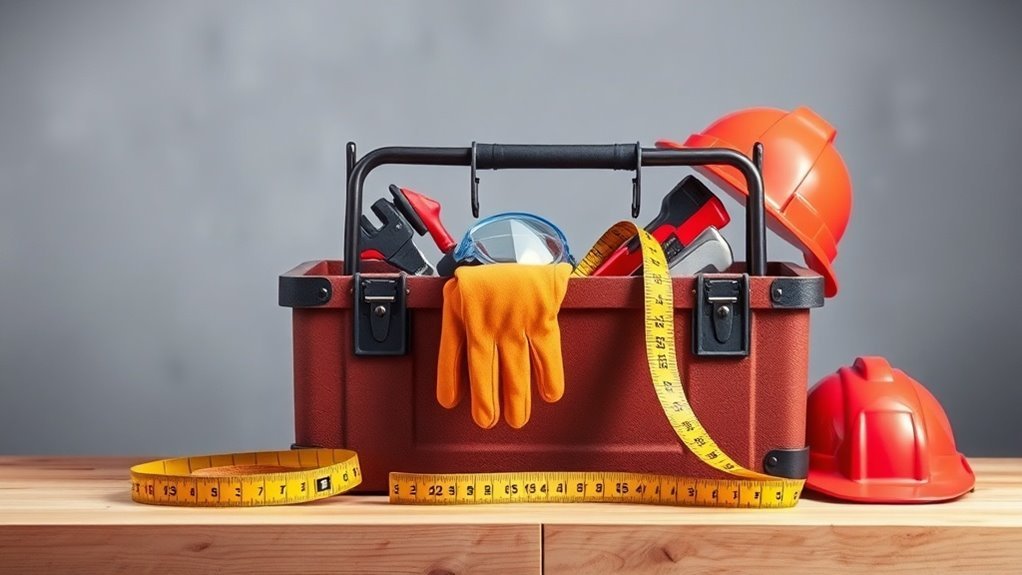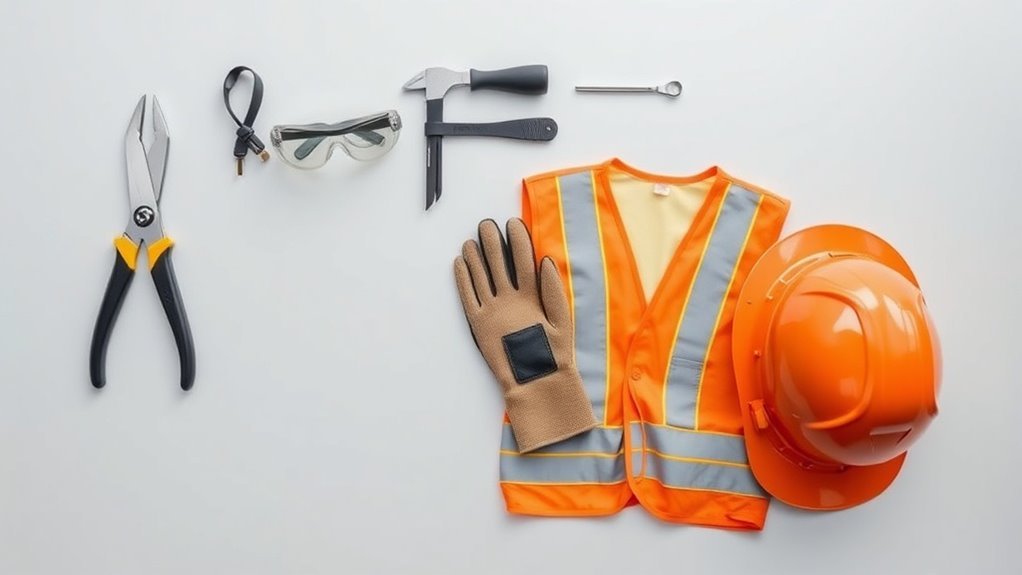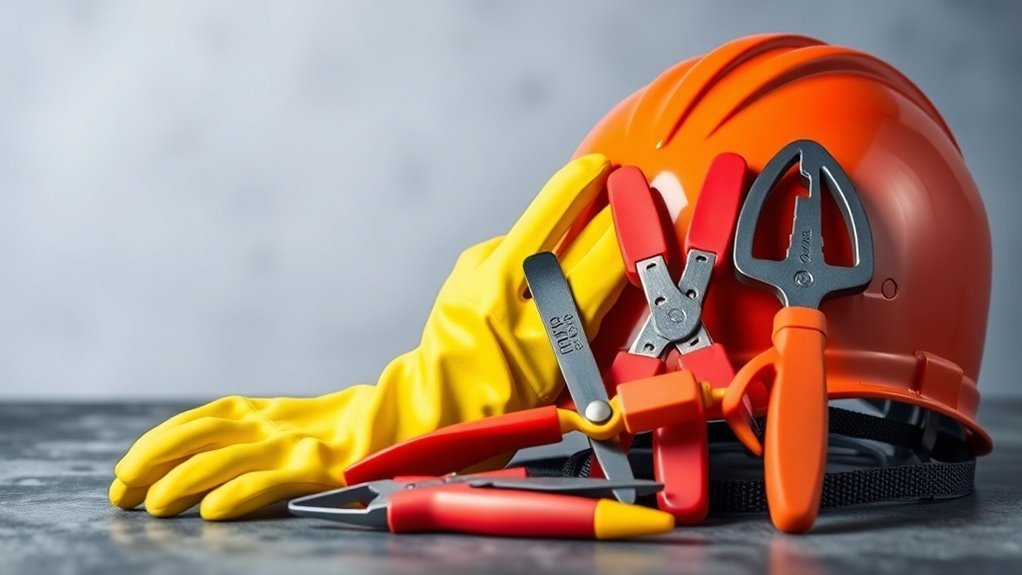History of Safety Helmets and Their Evolution
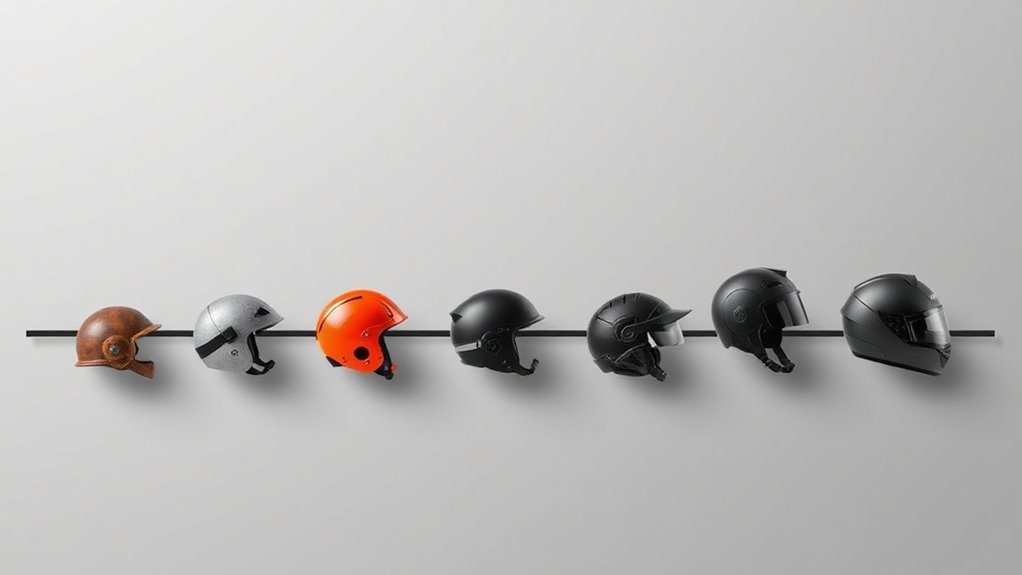
Safety helmets have come a long way from their ancient origins in civilizations like Egypt, where warriors used leather and metal for head protection. The 20th century saw a surge in helmet design, driven by industrialization and the need for comfort and safety. Modern helmets incorporate advanced materials like polycarbonate and Kevlar, ensuring better impact resistance. With innovations like smart helmets on the rise, there’s much more to discover about their journey and future advancements.
Key Takeaways
- Early head protection evolved from ancient civilizations like Egypt with leather and metal helmets used by warriors and laborers.
- The 20th-century industrialization raised the demand for helmets, focusing on impact resistance and user comfort.
- Modern helmets utilize advanced materials like polycarbonate, fiberglass, and EPS foam for enhanced safety and durability.
- Rigorous impact testing ensures helmets meet ANSI and OSHA safety standards, with specific ratings based on usage.
- Future trends indicate potential for lighter, smarter helmets with integrated sensors and eco-friendly designs tailored for various industries.
Origins of Head Protection in Ancient Civilizations
Although head protection may seem like a modern necessity, its roots trace back to ancient civilizations where warriors and laborers sought ways to guard themselves against injury.
In ancient Egypt, for example, you’d see guards and soldiers wearing helmets made from leather, metal, or even woven plant materials. These early designs aimed to deflect blows during battles or accidents.
The Greeks and Romans also innovated, crafting helmets that provided more coverage while allowing for movement. You might imagine these warriors, adorned in their protective gear, taking on enemies with a bit more confidence.
Laborers weren’t left out either; they fashioned simple head barriers to shield against falling debris.
This need for safety laid the groundwork for what would eventually become modern safety helmets.
The Development of Modern Safety Helmets in the 20th Century
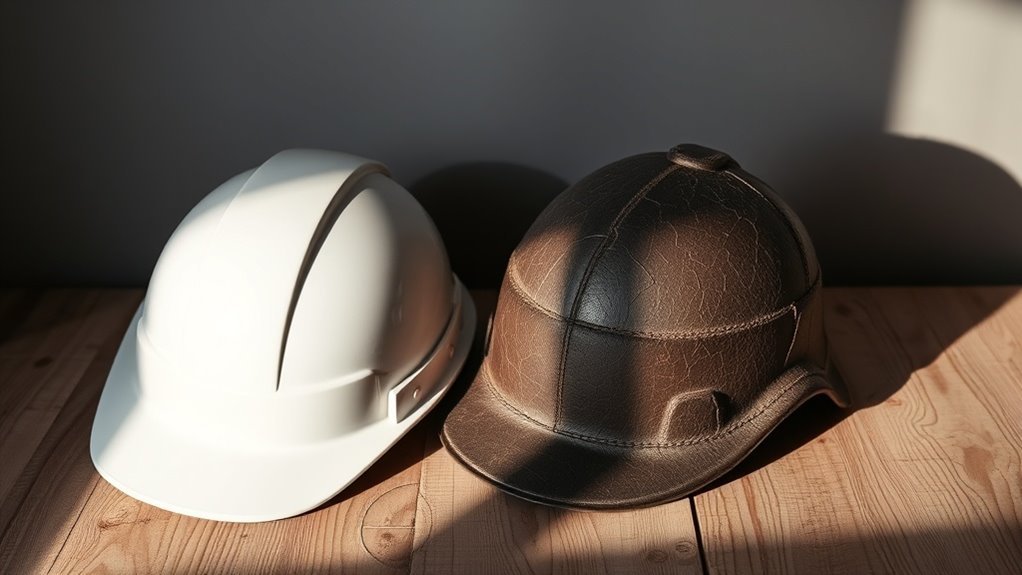
As industrialization accelerated in the 20th century, the need for effective head protection became increasingly apparent, leading to significant advancements in helmet design.
You might notice that early safety helmets were often made from heavy materials, providing minimal comfort and mobility.
Over time, manufacturers began experimenting with new shapes and features, focusing on impact resistance and fit.
Key Materials Used in Helmet Design
Advancements in helmet design followed closely with improvements in the materials used for construction.
Today, you’ll find helmets made from various high-performance materials that enhance both safety and comfort. Thermoplastic shells, like polycarbonate, offer excellent impact resistance while remaining lightweight.
Many modern helmets also incorporate fiberglass or Kevlar, which add strength and durability without excessive weight. Inside, you’ll often see expanded polystyrene (EPS) foam that absorbs shocks, effectively reducing the risk of injury.
Additionally, some helmets feature moisture-wicking liners for better airflow and comfort during extended wear. By using these advanced materials, manufacturers have markedly elevated helmet performance, ensuring you’re better protected on the job or during recreational activities.
Impact Testing and Safety Standards
When you put on a helmet, understanding its impact testing and safety standards can give you peace of mind about your protection.
Understanding a helmet’s impact testing and safety standards ensures your protection and peace of mind.
Helmets are subjected to rigorous testing to guarantee they meet safety requirements, like those set by the American National Standards Institute (ANSI) and the Occupational Safety and Health Administration (OSHA). These standards evaluate how well a helmet can absorb impact and protect your head from various hazards.
You’ll find that different types of helmets have specific ratings based on their intended use, whether for biking, construction, or other activities.
Always look for certifications indicating the helmet’s compliance with these standards. Doing so guarantees you’re choosing a helmet that maximizes your safety in potentially dangerous situations.
Evolution of Helmet Styles Across Industries
When you look at helmet designs, you can see how early protective styles laid the groundwork for what’s out there today.
Industrial advancements have drastically changed the materials and technologies used, making helmets more effective than ever.
Now, modern safety features are essential, ensuring protection across various industries. Understanding impact resistance is a key factor that has significantly influenced helmet evolution and design improvements over the years.
Early Protective Designs
Throughout history, various industries have prioritized safety, leading to the evolution of protective designs, particularly helmets. In the early days, helmets were often rudimentary, made from leather or metal. These initial designs focused on basic protection against impact but lacked comfort and ventilation.
Here’s a visual representation of early helmet designs across different fields:
| Industry | Helmet Design |
|---|---|
| Construction | Leather caps |
| Military | Steel helmets |
| Sports | Basic padded headgear |
As time passed, these early designs sparked innovations, blending materials and ideas to enhance both safety and usability. The focus began shifting toward ergonomic shapes and lighter materials, laying the groundwork for modern helmet technology in various industries.
Industrial Advancements Impact
As technology advanced, helmet designs underwent significant transformations across various industries, adapting to emerging safety standards and user needs. These changes not only enhanced protection but also improved comfort and usability for workers.
Here are three notable helmet style evolutions:
- Construction Industry: Helmets now feature hard shells with integrated visors, making them lightweight yet durable against heavy impacts and falling debris.
- Motorcycling: Helmets transformed with aerodynamic designs and advanced materials, improving safety while reducing drag and enhancing comfort during rides.
- Sports: Helmets for activities like cycling and skiing now include ventilation systems and padding adjustments, offering better fit and cooling without sacrificing safety.
These advancements reflect a commitment to worker safety, acknowledging the importance of functional and effective helmet designs in various high-risk environments.
Modern Safety Features
While helmet styles have continually evolved, modern safety features have become paramount in enhancing user protection across various industries.
Today’s helmets sport advanced materials like polycarbonate and fiberglass, providing lightweight yet durable protection. You’ll notice features like impact-absorbing foam linings and MIPS (Multi-directional Impact Protection System) technology, which help reduce rotational forces during impacts.
In the construction and sports sectors, helmets now come equipped with integrated communication systems and face shields that enhance visibility and safety.
Adjustable fit systems guarantee a snug fit, ultimately improving comfort and protection. You might also see bright colors and reflective elements that boost visibility in various work environments.
As industries continue to innovate, helmets will only become more specialized for diverse safety needs.
Innovations in Helmet Technology
In recent years, innovations in helmet technology have transformed safety standards and user experiences alike. You may find it fascinating how these advancements increase protection and comfort.
Here are some key innovations:
- Smart Helmets: Equipped with Bluetooth and GPS, these helmets connect you to your devices, providing real-time data and communication.
- Advanced Materials: Cutting-edge composites and foams not only make helmets lighter but also enhance impact resistance, making them safer.
- Ventilation Systems: Improved airflow designs keep you cool and comfortable during prolonged use, reducing fatigue and distractions.
These innovations guarantee helmets aren’t just a safety requirement but also a functional and enjoyable part of your gear, encouraging more people to wear them consistently.
The Role of Helmets in Extreme Sports
When it comes to extreme sports, wearing a helmet can be a game-changer for your safety. Whether you’re skiing down a steep slope, riding a BMX bike, or surfing massive waves, the risks are significant.
A helmet protects your head from impacts and reduces the chance of serious injuries. It’s essential to choose a helmet designed specifically for your sport, as each one features unique safety standards and materials.
You should always verify it fits snugly and comfortably, without obstructing your vision. Remember, a helmet is only effective if you wear it every time you engage in extreme activities.
Prioritizing your safety can make your adventure more enjoyable, allowing you to push your limits with confidence.
Military Advancements in Head Protection
As military conflicts have evolved, so too have the advancements in head protection for soldiers. These helmets are designed to enhance safety while maintaining mobility and comfort.
You’ll appreciate the significant enhancements over time, each addressing specific battlefield needs:
- Lightweight Materials: Modern helmets use advanced composites to reduce weight without sacrificing protection.
- Integrated Technology: Many helmets now come with communication systems and night vision capabilities, allowing for better situational awareness.
- Ballistic Resistance: Progress in ballistic testing has led to helmets that can withstand higher-caliber impacts, ensuring soldiers’ heads are better protected against shrapnel and gunfire.
These improvements reflect a commitment to soldier safety, adapting to the ever-changing dynamics of warfare.
The Future of Safety Helmets and Emerging Trends
With advancements in technology rapidly reshaping safety gear, the future of safety helmets promises even greater protection and functionality.
You can expect innovative materials that are lighter yet stronger, enhancing comfort without compromising safety. Smart helmets with integrated sensors will monitor environmental hazards, alerting you to potential risks in real-time.
Augmented reality features may allow for improved situational awareness, giving you essential data while keeping your hands free. Consider the emergence of customizable designs tailored to specific industries, ensuring you have the best protection for your unique needs.
As safety regulations evolve, companies will adopt eco-friendly materials, reducing their environmental impact.
Ultimately, the future of safety helmets aims to provide you with a safer, smarter, and more supportive experience.
Questions
How Do Helmets Vary by Country and Regulation Standards?
Helmet standards vary globally; some countries prioritize impact resistance while others emphasize visibility or ventilation. You’ll find different regulations governing materials, design, and testing methods—so it’s essential to check local standards before purchasing.
What Factors Influence the Price of Safety Helmets?
You might think all helmets cost the same, but factors like materials, design, certifications, brand reputation, and intended use greatly influence their price. Higher-quality helmets typically offer better protection and comfort, making them worth the investment.
How Should Helmets Be Properly Fitted for Maximum Safety?
To guarantee maximum safety, you should adjust the helmet’s straps to create a snug fit around your chin, make sure it sits level on your head, and check for any movement when you shake your head.
Are There Any Environmentally Friendly Helmet Options Available?
When it comes to helmets, you’ve got plenty of eco-friendly options! Many brands use sustainable materials like recycled plastics or biodegradable components, ensuring your safety gear doesn’t hurt the planet. It’s a win-win situation!
What Common Misconceptions Exist About Helmet Usage and Safety?
Many think helmets guarantee complete safety, but that’s misleading. They reduce risk considerably, yet can’t prevent all injuries. Some believe helmets are only needed for biking, ignoring their importance in other activities too.
Conclusion
To sum up, the evolution of safety helmets highlights their critical role in protecting lives across various fields. Did you know that wearing a helmet can reduce the risk of head injury by up to 85% in some biking incidents? As technology advances and design continues to innovate, we can expect even greater levels of safety and comfort in the future. So, whether you’re riding a bike or working on a construction site, a helmet is an essential piece of equipment.


